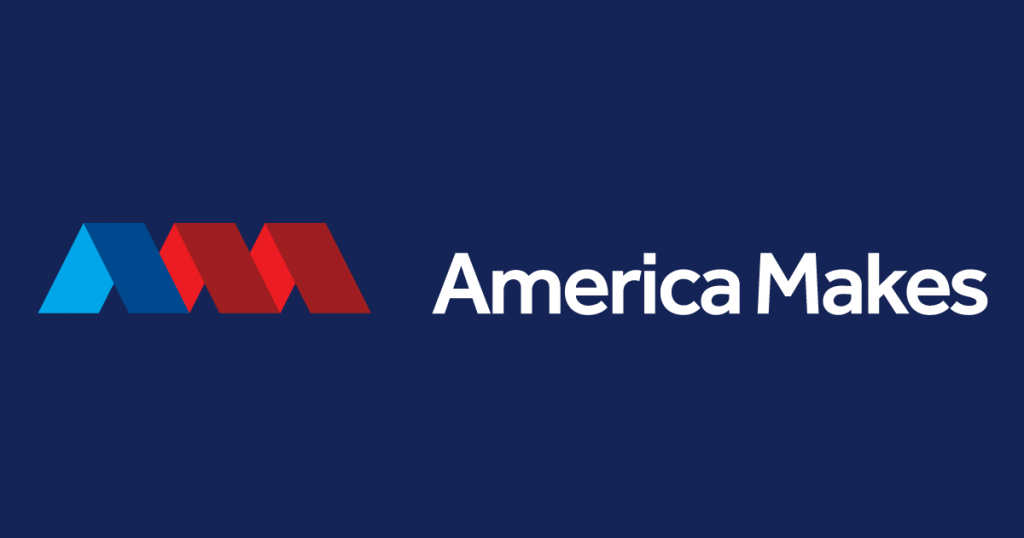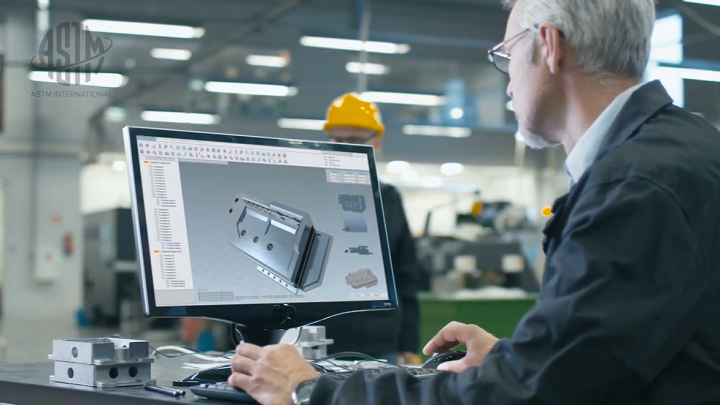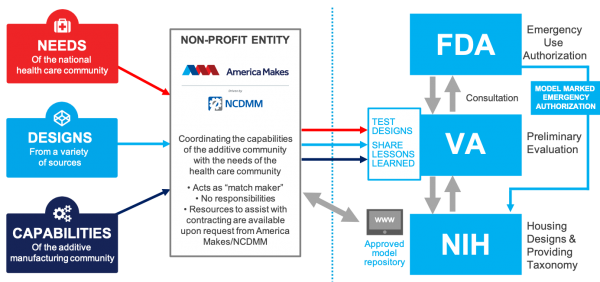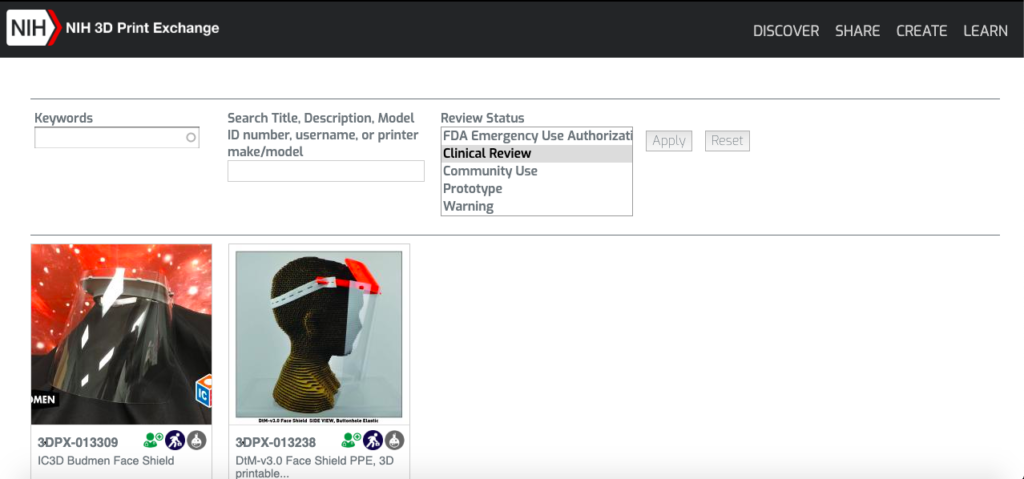3D printing events guide for August featuring nTopology, Creaform, DI Labs, ASME and more
America Makes launches four new project calls with $2.1M in awards
Raytheon awarded $841K to advance 3D printed military optics
Registration opens for ISS U.S. National Lab’s “Additive Manufacturing in Space” workshop
US Air Force uses Senvol software to develop multi-laser 3D printing applications
ASTM International & America Makes Create Strategic Guide for Additive Manufacturing Data
As the national accelerator for additive manufacturing (AM) in the U.S., Youngstown, Ohio-based America Makes works to accelerate adoption of the technology and increase the country’s global manufacturing competitiveness through training, events and trips, projects, apprenticeships, and standards publication. This week, ASTM International’s Additive Manufacturing Center of Excellence (AM CoE) announced that, together with America Makes, it has created a strategic guide for AM data.
The guide is a direct result of a workshop about AM data management and schema held this winter in Washington D.C. and organized by ASTM and America Makes. Over 100 academic, government, and industry experts came together to engage in brainstorm sessions, technical presentations, and panel discussions, all relating to data in additive manufacturing.
“A key and large gap in the development of an AM data ecosystem is how to easily and securely generate, store, analyze, and share critical and vital data. A sub-gap is the consistency of the data that is gathered across multiple groups,” stated Mohsen Seifi, PhD, ASTM International’s director of global additive manufacturing programs.
ASTM International works to serve societal needs of the world and educate industry professionals. The group has defined and set over 12,000 ASTM standards that are operating all around the world. The AM development timeline could be speeding up, due to developments in analysis, artificial intelligence, digital data acquisition, machine learning, and modeling, but the expansion has not been observed yet. The new strategic guide has identified action plans, challenges, gaps, and solutions for AM data to help with this growth.
Mahdi Jamshidinia, PhD, ASTM International’s AM R&D project manager, explained, “This strategic guide attempts to address series of gaps and provide solutions and potential action plans to address the gaps. The guide provides a summary of discussions during the workshop and can be used by all industry stakeholders and AM experts who want to participate in the development of an AM data ecosystem and contribute to standardization.”
“The guide highlights the importance of data management and data principles which will benefit the broader AM supply chain, and will serve as a resource to strengthen collaboration and ease the challenges common to AM data sharing. We are grateful to all who worked on this effort and believe this guide complements the efforts of the AMSC and America Makes’ technology maturation strategic objectives,” stated Brandon Ribic, Technology Director of America Makes.”
Additionally, the December workshop led to the development of a new subcommittee about data, which will create and perform value-stream mapping processes in order to call out the dependencies, needs, opportunities, processes, and tools that the industry needs in order to completely understand the digital thread. The subcommittee, F42.08, is within ASTM’s existing F42 additive manufacturing technologies committee, and one of the first projects it’s working on is the standardization of the AM common data dictionary (CDD).
Alex Kitt, PhD, product manager at EWI and chair of the new subcommittee, said, “This new subcommittee will provide a home for AM data experts where key standards activities can be coordinated, prioritized, and developed.”
The AM CoE also introduced a new insight video this week that’s also about AM data management, so it goes hand in hand with the new strategic guide. The video, below, features interviews with some important figures in the industry, including GE Research AI Principal Scientist Kareem Aggour; Shane Collins, the VP and General Manager of Additive Industries North America; Technical Specialist Douglas N. Wells with the NASA Marshall Space Flight Center; and ASTM’s own Seifi.
Discuss this story and other 3D printing topics at 3DPrintBoard.com or share your thoughts in the Facebook comments below.
The post ASTM International & America Makes Create Strategic Guide for Additive Manufacturing Data appeared first on 3DPrint.com | The Voice of 3D Printing / Additive Manufacturing.
ASTM and America Makes launch strategic guide for additive manufacturing data
3D printing industry news sliced: Formnext, America Makes, 3D Systems, Kingsbury, Amaero, Farsoon and more
3D Printing for COVID-19, Part Eight: The FDA’s 3D Printing Resources
The U.S. Food and Drug Administration (FDA) is now working with the Department of Veterans’ Affairs, the National Institutes of Health (NIH), and the 3D printing trade group America Makes to provide some coherence and regulation to the work of additive companies and individuals to address the COVID-19 outbreak in the U.S.
The result is the COVID-19 Health Care Needs and Additive Manufacturing (AM) Capabilities Repository, an online library where AM companies can upload designs to be reviewed and placed on the NIH 3D Print Exchange. When uploaded through the America Makes submission form, 3D printable designs will be fast tracked for review. According to the organization, this approval process is meant to help determine the safety and reliability of these devices in a healthcare setting.
The site will include information necessary for AM and healthcare providers that will ensure they meet medical standards for production. Through this process, the FDA is processing Emergency Use Authorization Applications to streamline the availability of safe medical devices. So far on the NIH repository, two face shields are under clinical review, while numerous others are prototypes in progress. This raises the question of just how much innovation needs to be dedicated to face shields when there are already so many designs available. The next step for these shields is FDA Emergency Use Authorization.
Meanwhile, the VHA has established an ecosystem meant to connect hospitals and clinics within the VA healthcare system that have 3D printing design and engineering expertise so that they can provide that expertise to others. As a part of the VHA Innovation Ecosystem, lessons and resources can be shared with frontline employees and the 3D printing community. Individuals can also volunteer to print, design, or provide feedback for in-demand equipment & resources.
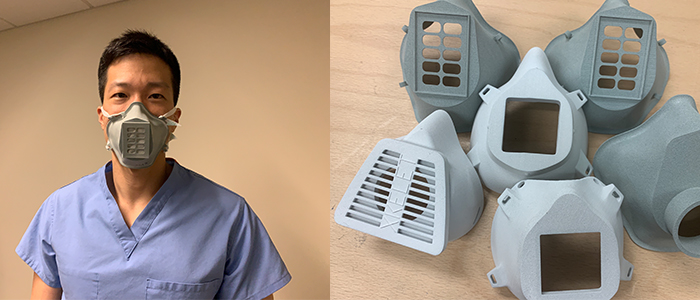
Left Image: VA physician Dr. William Chang evaluates a prototype 3D-printed mask, designed by VA staff. Right Image: Different mask designs printed and awaiting clinical evaluation. Image courtesy of VHA.
Within this larger effort, the FDA and its partners are establishing other resources to aid in the development, production and distribution of 3D-printed medical devices as well. This includes a key FAQ page on 3D printing medical devices, accessories and parts during the pandemic. Here is a summarized list of what is discussed on the page:
- The FDA has issued previous guidance on 3D-printed medical devices that should be considered during the pandemic.
- 3D-printed personal protection equipment (PPE) will not provide the same protection as FDA-cleared surgical masks and N95 respirators, but if they are used, the FDA has provided information about how to make them as effective as possible.
- Safety considerations that should be taken into account for 3D-printed masks include:
- checking the mask for seals
- ensuring that the wearer can breathe through the mask and any makeshift filters
- using caution in surgical environments
- knowing the mask may not be an adequate filter for preventing the transmission of disease
- safely disposing of the masks.
- Complex products cannot be easily printed
- Those printing parts should ensure they match originals as much as possible and ensure they fit and work properly.
- Those printing parts should work with relevant medical device manufacturers.
- The FDA is willing to discuss the possibility of 3D printing entire medical devices and should be contacted at COVIDManufacturing@fda.hhs.gov to learn more.
- The FDA’s Emergency Use Authorization (EUA) includes 3D-printed tubing for multiplexing ventilator use.
Other critical information shared by the FDA includes studies examining and optimizing the decontamination and reuse of respirators during public health emergencies. Additionally, ASTM International is offering free access to its Standards related to COVID-19. The FDA has also provided a link to Cambridge University’s research into the efficacy of household materials as filters used during a flu pandemic.
We will examine all of this information in greater detail to better understand what is and isn’t needed from 3D printing providers to address medical supply shortages, as well as the safety precautions involved, and provide further updates in subsequent articles.
The post 3D Printing for COVID-19, Part Eight: The FDA’s 3D Printing Resources appeared first on 3DPrint.com | The Voice of 3D Printing / Additive Manufacturing.

